Our Lady of Lost Ships and the Looting Prince
Rocmandour's miraculous shrine of the Black Madonna

Before you start reading, thanks for visiting Out of Dark Waters, Over Mountains. I love writing these blogs and it would be wonderful to earn some of a living from it, but I don’t. It’s a labour of love, and I don’t charge people paid subscriptions. However there is always the option to buy a coffee.. thanks!
Rocmandour’s shrine was looted by a character in my book (The Curse of Melusine), Henry the Young King in 1183, to pay his mercenaries. He robbed the treasures of this most holy shrine of the Black Madonna (La Virge Noire) and the cost of this was death, as far as I can see. That is why I had to go there last week. To light him a candle, to put things right. As if my action made a difference- but you never know.
The Black Madonna chapel is the most holy of eight chapels built between the 11th and 13th centuries. Carved of walnut, she sits in the Chappelle Notre Dame. The building sits 360 feet high on the Alzou River Gorge, beneath which is a modestly sprawled little town, which is these days of course riddled with tourist shops. 216 steps lead up to the chapel, the Grand Escalier leading to her Sanctuary.
Henry the Young King, (Also known as Henri Court-Mantel as he wore short clothes) was the eldest son of Eleanor of Aquitaine and Henry II, crowned Prince of the Anglo Norman realm. He declared war for a second time in 1183 against his father and his brother Richard the Lionheart who had inherited the Dukedom of Aquitaine, of which Young Henry was ferociously jealous. Young Henry got himself into a mire of spiritual trouble after the looting of these shrines to pay his Gascon mercenaries.


It was said that as Young Henry left Rocmandour, with his loot, the bell rang out from the Chapel as a sign from God. Henry of Blois had already written him a harsh letter:
You have become no more than a leader of freebooters, you consort with outlaws, you make yourself an enemy of God and Justice and a transgrerssor of all laws… if you do not obey your father to whom you owe all that you are… where is your fear of God?
- Henry of Blois in a letter to Henry the Young King, 1183
The Count of Tonerre led the Young King up the heaths to Rocmandour to the seven sacred shrines. The band of rebels took the crosses, the chalices and frontals. The Black Madonna looked on from her sanctuary in the steep canyon walls.
Within days Young Henry was afflicted with the flux of the bowel (dysentry) and took refuge in the house of Étienne Fabri in the nearby town of Martel, where, with a few monks and a bishop and his old friend William the Marshal, he lay on a bed of cinders in penance, a heavy wooden cross on his chest. Old Henry was advised that his son’s call for forgiveness was trickery, though he knew in his bones he might be dying, so he sent a little old monk and a few doctors to his son in Martel, carrying for him a sapphire ring as a symbol of his forgiveness. With Young Henry’s death, the war was over. He died on June 11th, 1183, aged 28 in Maison Fabri and that ring never came off his finger. Today is his anniversary.
It’s not surprising that they all said the Young King’s death was brought on by his looting of the Rocmandour shrine, that it was some kind of instant karmic retribution ( not that they said that). But what and why was Rocmandour so beheld by and enshrouded in sanctity, that the looting of its shrine would yield such instant retribution? The Young King had looted other shrines at this time- like St Etienne at Grandmont. At Uzerche, the wily old abbot outwitted the Prince with flattery before he took the gold. At Brive, he’d pillaged Saint Martin’s shrine, and taken, to the Bishops’ horror, a golden dove that his father (Henry II) had donated as a sign of peace.
Before Henry II, many gifts were bestowed to the shrine at Rocmandour. In 1119 Odo, Count of La Marche, gave her the forest of Mont-Salvy. The lands of Gornellas and Orbanella, for the good of the souls of his relatives, were offered by Alphonso IX, King of Leon, in 1181. In 1202, Sancho VII, King of Navarre, gave a revenue of 48 pieces of gold for lighting the chapel of Notre Dame. In 1208, Savaric, Prince of Mauleon, a great captain and famous troubadour, gave his lands of Lisleau as alms, with no added tax. Pope Clement V, in 1314, left a legacy of perpetually keeping a wax candle lit in a dish of silver, in the chapel- for the deliverance of his soul.
During the middle ages, this was the shrine of greatest importance in France as it was also en route to the Camino, the pilgrimmage to antiago de Compostela in Spain. Pilgrims climbed up the 216 steps on their knees. Louis VII had crawled up the steps in 1160, and later his daughter Marie de Champagne (whose mother was Eleanor of Aquitaine by her first marriage to Louis VII.
Kings, paupers and Popes sought her miracles and the outside walls are studded with plaques of ‘Merci’ in gratitude from many kings and nobility. A Ninth Century bell rings out every time she performs a miracle, it is said. Many of those miracles are at sea as she is the towering protectress of sailors at sea. Models of ships and sailor’s hats dangle in her chapel. She is the towering protectress of sailors at sea, and there are models of ships and sailor's’ hats dangling in her chapel.
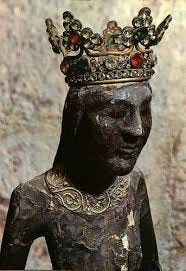
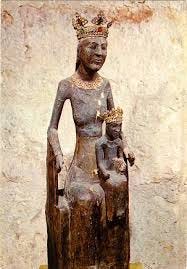
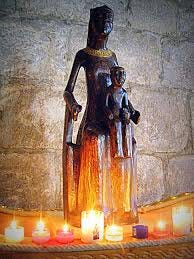

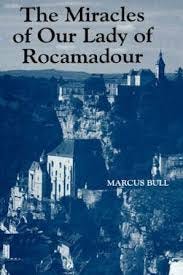
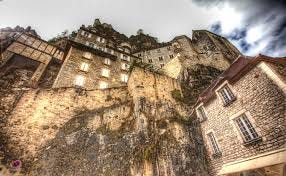
This place is also home to Saint Amadour, a hermit who mayhave been a servant to the Virgin Mary and whose body was found perfectly preserved in a cave nearby in 1166. His tomb was placed at the altar with the Black Madonna. He may have been the biblical Zaccheus, who fled to France to escape persecution in the Holy Land, and lived out his last days at Rocmandour. In any case the Protestants destroyed his body by fire in 1562 in one of their rampages. But the Black Madonna survived.
Now, there are many Black Madonnas across Europe.
“At Boulogne-sur-mer (France) the sailors carry a Black Virgin in the procession. At Clermont in Auvergne (France), the Black Virgin is revered as also at Einsiedeln, Switzerland, near Zurich, to which thousands of pilgrims — Swiss, Bavarians, Alstatian — go to pay her homage. The famous Virgin of Oropa in the Piedmont (Italy) is still a Negress, as well as the not less legendary one of Montserat in Catalonia (Spain), which receives 60,000 visitors a year. I have been able to trace the history of this one to the year 718 AD and it was always black. It is highly interesting to know, therefore, if the mother of Christ was not a Negro woman, how it happens that she is black in France, Switzerland, Italy and Spain?” - Romain Rolland
“In all the Romish countries of Europe, in France, Italy, Germany, etc., the God Christ, as well as his mother, are described in their old pictures and statues to be black. The infant God in the arms of his black mother, his eyes and drapery white, is himself perfectly black.”19th-century religious historian Sir Godfrey Higgins
Why is she black, considering the Madonna is usually pale, in white and blue and a little miserable looking? (Obviously the traditional white and blue iconography was invented by European Christians).
20th century studies by Durand- Lefebvre (1937), Emile Saillens (1945), and Jacques Huynen (1972) and Moss and Cappanari in USA (1952) sort of horrified the clergy, who didn’t like the findings one bit. They examined 100 Black Madonna icons from all over Europe and Mexico (Guadalupe). It was found that the extant icons of the Madonna were already black, before they were ever ‘exported’ to Mexico, where the indigenous folks were darker. The oldest Guadalupe Black Madonna image dates to the 12th century and the Christianizing of America’s indigenous peoples didn’t begin until nearly 300 years later, after the arrival of Christopher Columbus in 1492. None of the extant icons seem to have been simply darkened by smoke from candles. They deliberately have a black or brown complexion.
Perhaps she is actually the Great Mother, her roots going far back into prehistory. Black was the colour of rich, dark soil, hence a symbol of fertility. One finds rich dark soil in the River Valleys of the Nile River in Egypt, and they used black in Ancient Egypt to represent death and the underworld but also fertility and resurrection.

“When the circumstances have been named to the Romish priests, they have endeavored to disguise the fact by pretending that the child had become black by the smoke of the candles; but it was black where the smoke of the candle never came … The mother is, the author believes, always black when the child is. Their real blackness is not to be questioned for a moment.”- Gerald Massey
Benum, Hecate, Juno, and Metis of Greece were all depicted black, along with Isis of Egypt, Astarte of Phoenecia, Lilith of Babylon, Manat of Mecca, Cybele, and Artemis/Diana of Turkey, and also Aphrodite, Demeter, and Medusa of Greece. Goddess figures of India include Maya (mother of Buddha), Devaki (mother of Krishna), and the beautifully fearsome Kali and all of these goddesses are black.

It could be that the Black Madonna came from a literal interpretation of the biblical verse spoken by the Shulamite bride in the Song of Solomon. Some European icons contain an inscription: “Nigra sum sed formosa,” the Latin translation of the Biblical verse.
I am black and beautiful, O daughters of Jerusalem, like the tents of Kedar, like the curtains of Solomon.” – Song of Solomon 1:5
In the 4th century, after Rome had been declared a Christian state (378 AD), the mother of Christ was linked to the Shulamite bride from the Songs of Solomon. This early connection appears in the book De Virginibus by St. Ambrose, bishop of Milan.
St. Bernard of Claireveaux, who founded the Cistercian Order in the 1100s (and who always raised a strong eyebrow of disdain for Eleanor of Aquitaine, the Young King’s mother), also believed this about the Shulamite bride. What’s really interesting is that many of Europe’s Black Madonna icons date to the time of the Crusades, and that Bernard of Claireveaux was the man who in fact encoded the Knight Templar Rule, or ethical code. Bernard had a particular devotion to Mary and wrote many sermons to her, likening her to the black skinned bride in the Song of Solomon. He’d been a schoolboy when the Crusaders captured Jerusalem, studying at Chatillon-sur-Seine which had its own statue of the Black Virgin. Three drops of milk fell from the breast of the statue onto the head of the young Bernard as he knelt before her. Bernard himself was to become known for miracles and as he gained fame, Popes sought his counsel.

In 1118, the military order the Poor Knights of Christ was formed in France by Hugh de Payne who fought the first Crusade. There were nine knights. They presented themselves to King Baldwin II, crowned King of Jerusalem, vowing to protect the Holy Land and the pilgrims. By this time, Christian Crusaders had taken control of Jerusalem in 1099, driven out Muslims and Jews, installing their own European Christian Kings like Fulk V (1109-29), Count of Anjou and grandfather of Henry II. Once again, the Church of the Holy Sepulchre, the prime destination for Crusaders, became the focal point for Christian pilgrims.
Baldwin II gave the remains of the ancient Temple of Solomon to the Knights Templar for their lodging and so when they returned to Europe, they told Bernard de Claireveaux all about their secret excavations in ancient tunnels beneath the Jerusalem temple. Bernard promplty had the Roman Catholic Church (the Pope) sanction the Knights Militant and he developed their Rule (code of ethics) - so that they were answerable only to their own Grand Master, who was only answerable to the Pope. That was certainly a great way of keeping the secrets of their discoveries to themselves. They had more or less complete legal immunity. These were warrior monks like no other.
What were the Templars looking for? It’s said they sought the Holy Ark of the Covenant beneath the Temple. The Copper Scroll of the Dead Sea Scrolls (found in 1952) refers to ancient burial sites and the treasures of the Temple of Jerusalem. It is very possible that the Templars found that treasure, along with scriptures and treatises on sacred geometry, and esoteric wisdom of the Mystery Schools of Egypt and Palestine.
The Young King himself had ‘taken the Cross’, meaning that he vowed he would go to Jerusalem, but he died before he could fulfil his promise. His mentor and man-at-arms, William the Marshal, promised him on his death bed he would take the Cross for him.
Marechal, (Marshal), you have always been true and loyal to me. I bequeath you my cross and beg you to bear for me to the Holy Sepulchre. You shall redeem my pledge to God.
- Henry the Young King to William the Marshal on his deathbed in Martel, 11th June 1183
In the later 12th century, Bernard and the Templars found ‘proof’of the Virgin’s dark complexion and it was at this time that the Knights Templar brought back Black Madonna icons from Jerusalem. However, the origins of the black Madonna most probably have their origins in very ancient traditions. In the Catacombs in Rome, an ancient painting of the Virgin Mary depicts her as a brown-skinned woman in a reddish tunic, her head covered by a reddish veil. She is seated, and on her lap holds the infant Christ, also brown skinned, with brown curls on his head, his eyes peering out through dark eye sockets. A man stands beside them, also brown skinned, in a philosopher’s tunic. Some say it’s the Old Testament prophet Isaiah, who foretold the birth of a messiah saying, “Behold, a virgin shall conceive, and bear a son, and shall call his name Emmanuel.” (Isaiah 7:14).
Many traditions attribute the arrival of the Black Madonna icons in Europe to Templars returning home from Jerusalem ( since it was so prolific during the Gothic Age), yet the iconography may well have its source in Rome’s far more ancient, but lesser-known Black Madonna tradition. Books and articles dedicated to the art of the catacombs are all very vague, giving inaccurate, misleading descriptions of the ancient fresco. Some publications even leave out this particular image. The frescos of the Priscilla Catacomb are among the earliest depictions of Mary and Jesus but they are also the earliest known examples of the Black Madonna icon.
Ian Blegg’s book, Cult of the Black Virgin relates how in 1944, Leonard Moss entered a church at Lucera, a city in southern Italy. Moss saw a Black Virgin statue, which he’d never seen before. He asked the priest, “Father, why is the Madonna black?”
The priest replied, “My son, she is black because she is black.”
We might ask instead, why is she white?
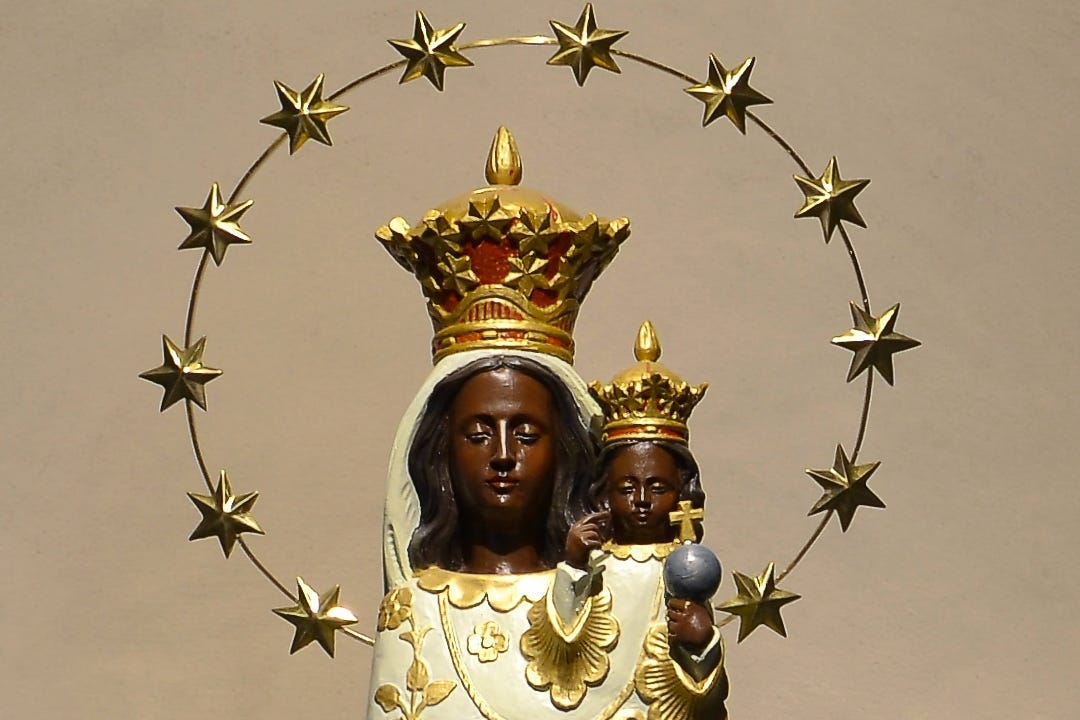
This blog is in honour of the Black Madonna, but it is also in honour of the Young King Henry, who was so jealous, lost and confused that he lost his way with his rebel barons, his mercenaries and his loot. And he got his commupance- possibly from the Black Madonna. Henry ‘Almost King’ Plantegenet would never become Henry III, inheritor of the vast Angevin empire, with borders reaching from Scotland to Spain and the Mediterranean sea and of course, little old Ireland. All our troubles, of course, began with his father, Henry II and his brother, King John, the little whingebag. Can I blame the Young Prince for going to war with the old tyrant? Sometimes, we have to root for the anti-hero. If they can sin, so can we.
I lit him a candle, one that I brought with me from here. A tall, red one. But the old nun in the chapel whittled it away. I went to Matins a few times. She had her eye on me. She could hear me mumbling along with the Matins and didn’t bother to even give me the prayer book on the second day. So I thought, I’ve got to buy one of those pillar candles for him, I can’t just rob one!! That would add to his troubles, and mine. So I bought one for ten euro, and it’s probably still lighting. I lit one in the garden for him too when I got back. I have no idea why I keep thinking about him, he might be an old cousin. I feel terribly sorry that he died in such misery.
His mother, Eleanor, while still locked up in Old Sarum Fort, dreamed of him before he’d even died, before she even knew what he was up to. She told her handmaiden:
I saw a glittering sapphire ring on Young Henry’s finger, his hands in prayer, as if he was a tomb effigy. Above his white, ghostly face, hovered two crowns. The firest was the one he wore at his curation, the second was ahalo of dazzling light, shining like the Holy Grail.
Eleanor of Aquitaine, 1183
Thanks for visiting Out of Dark Waters, Over Mountains. I love writing these blogs and it would be wonderful to earn some of a living from it, but I don’t. It’s a labour of love, and I don’t charge people paid subscriptions. However there is always the option to buy a coffee.. thanks!




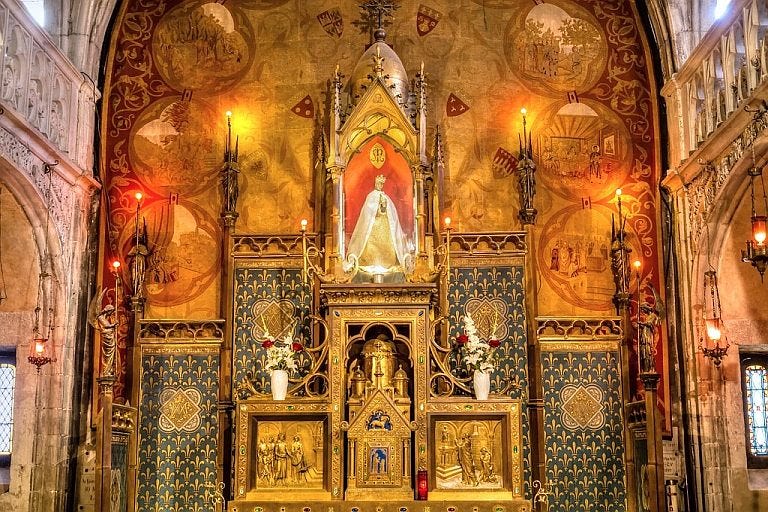
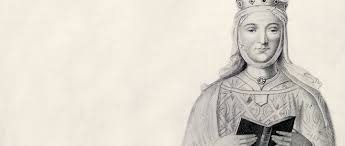

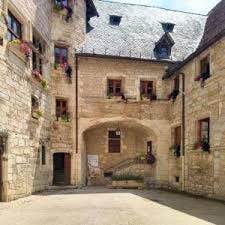

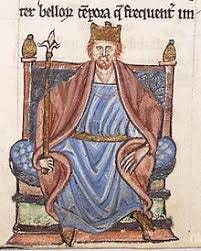



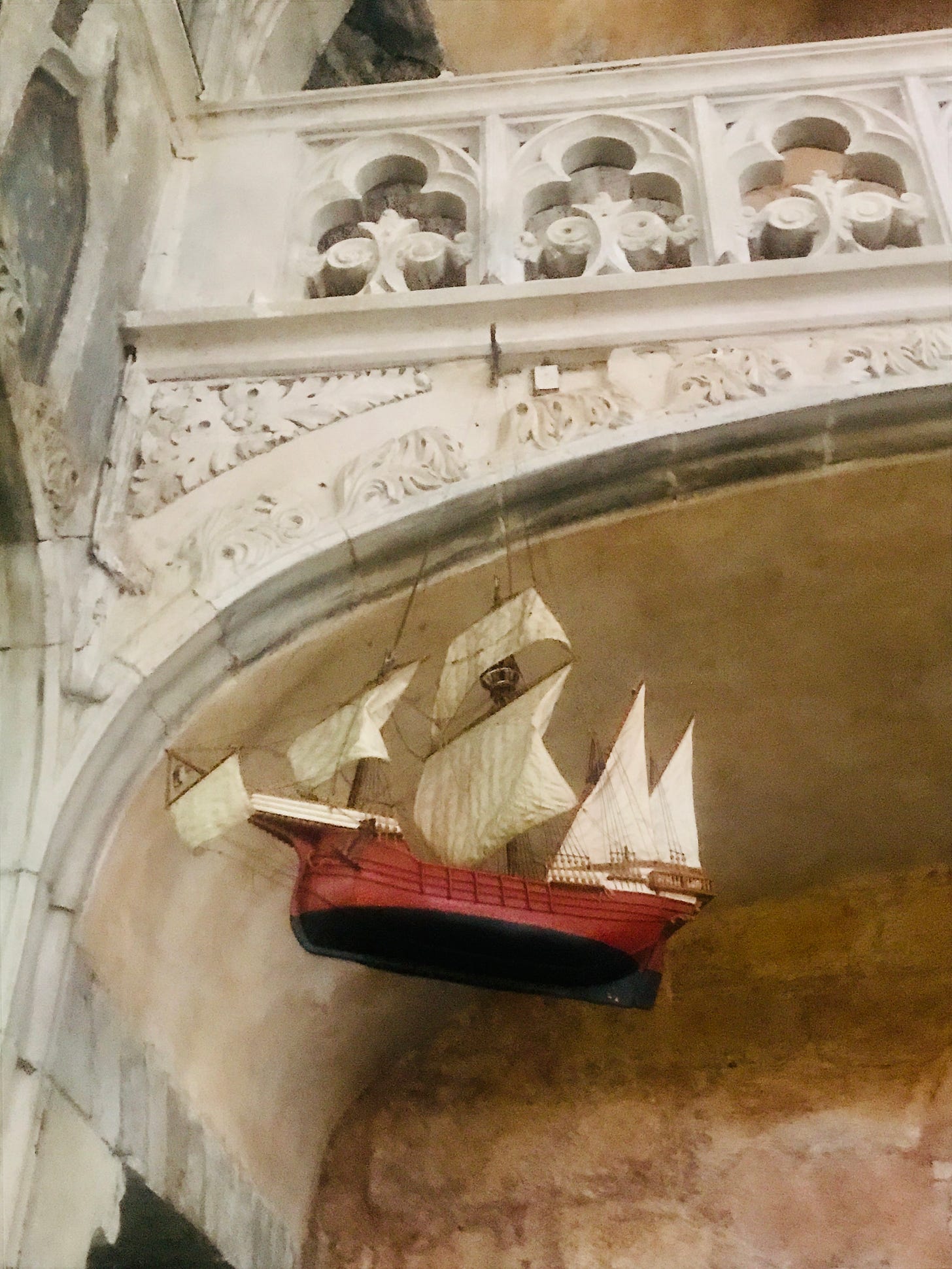
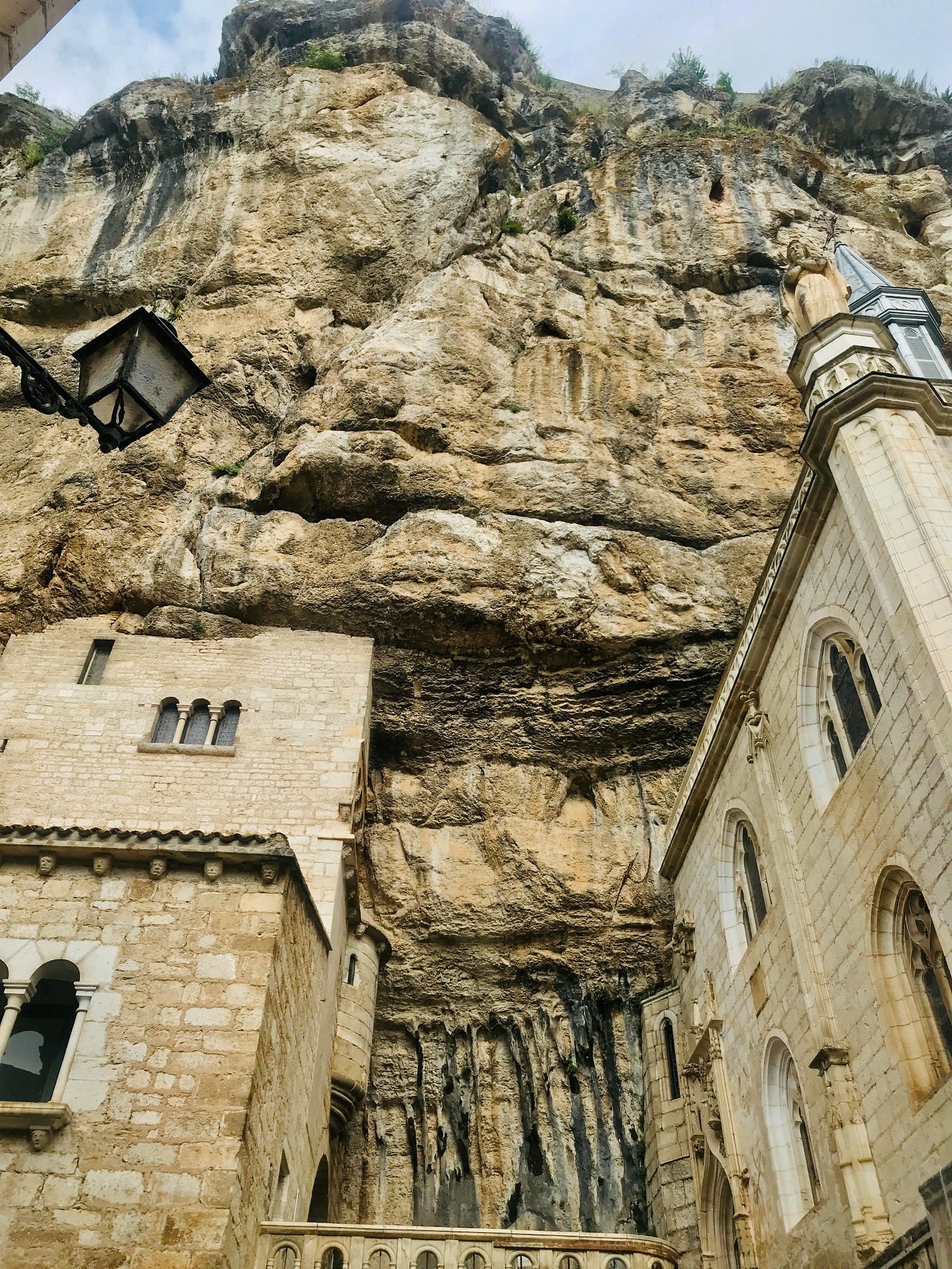
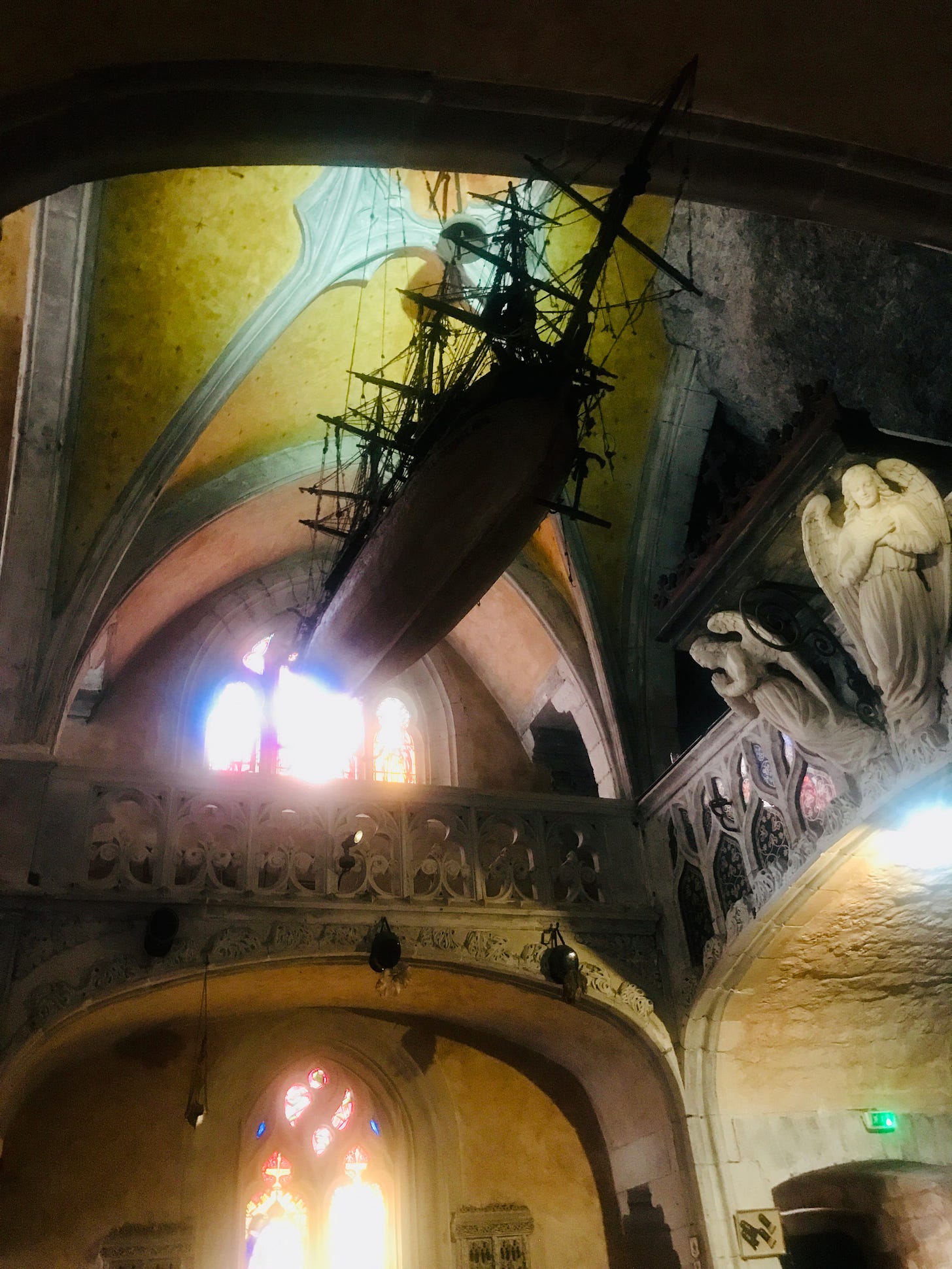
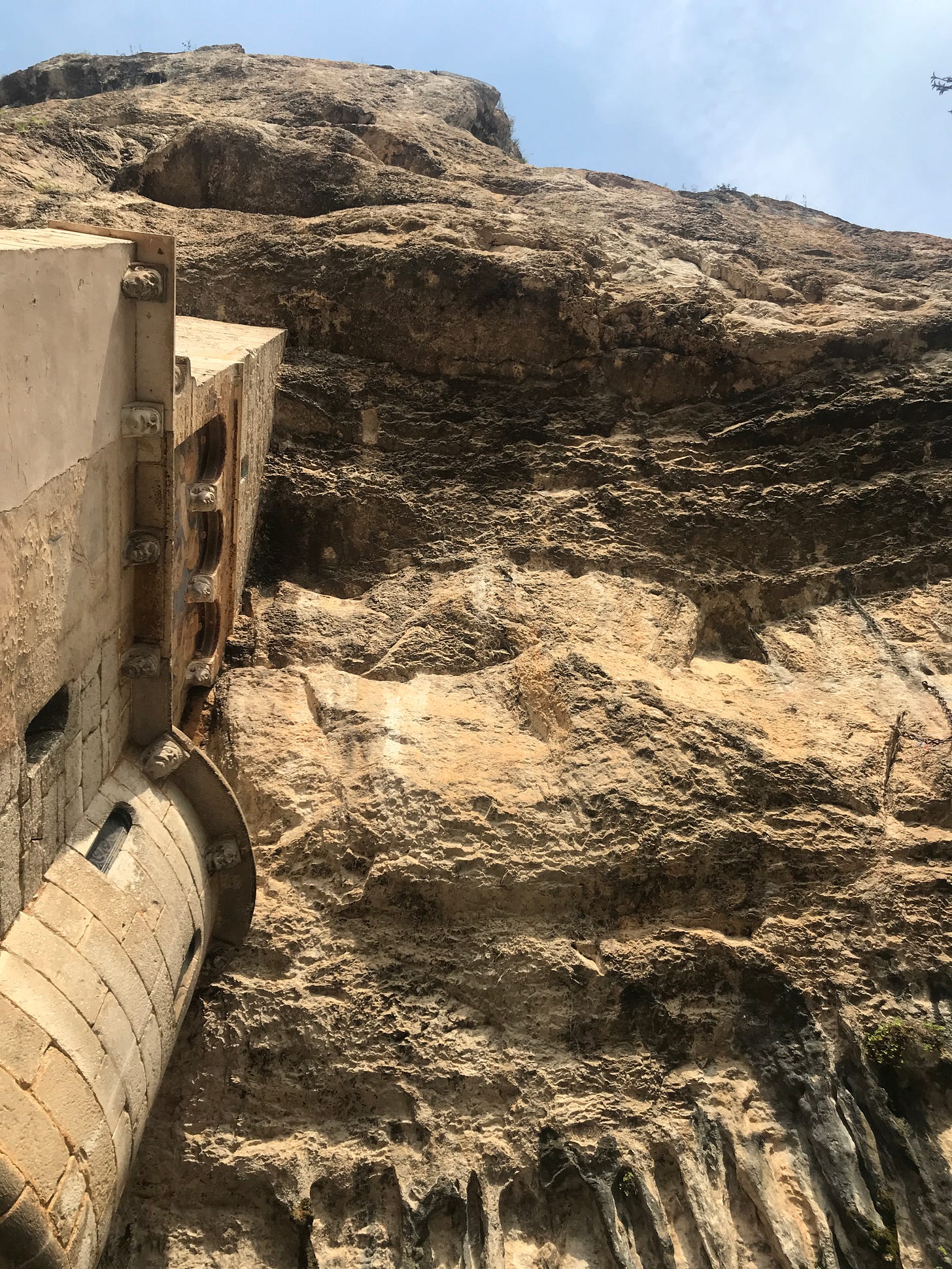
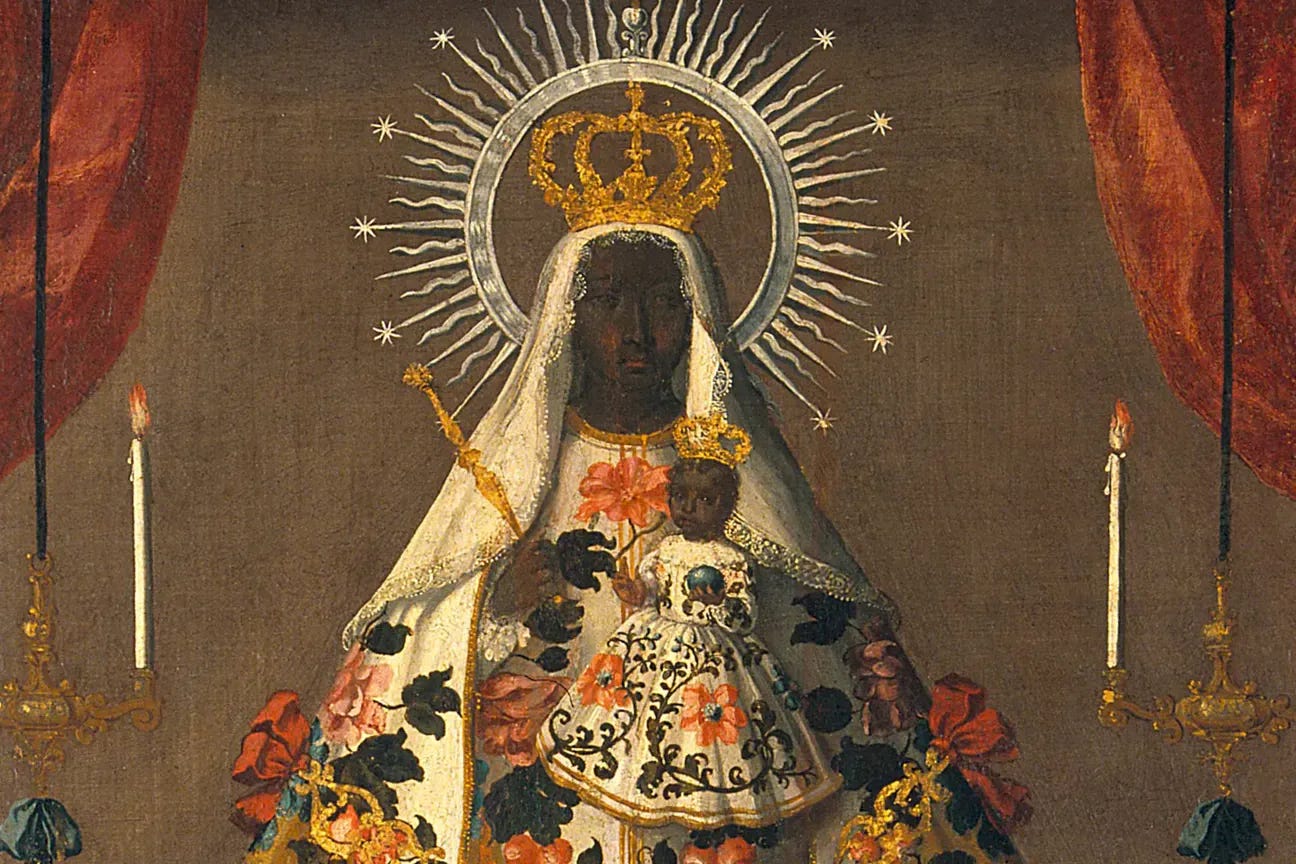

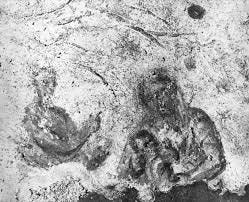
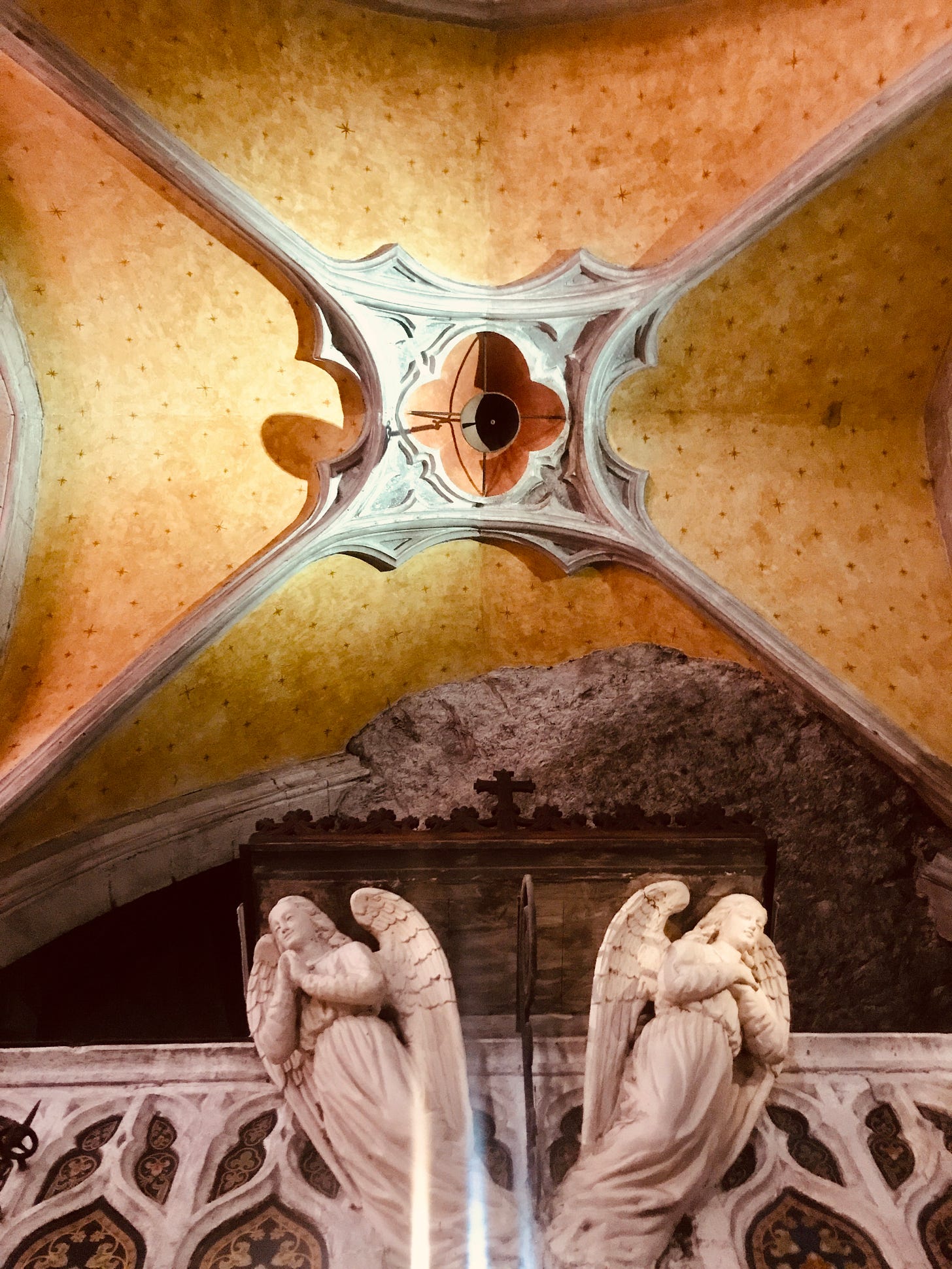
Loved reading about the Black Madonna and poor Henry :(
I never knew there was so much to see at Rocamadour; I've been about 20 years ago. Entranced by all the detail of the Knights Templar too.
How amazing that you felt compelled to visit and light a candle for Henry. Maybe you should get a past life regression to see if there is a connection with him?
Once, several years ago, an Egyptian mystic who wrote to me explained the mystery of the Black Madonna as that which was beyond exoteric tradition. That She was linked to Gnosticism and the Darkness within where one finds all the Silence.
The transformative aspect was linked to all underground waters, to the unconscious and the void.
I was told that there were unique pilgrimage paths to her sanctuary.
These times are requiring a deep dive into the darkness within, that we can close this old cycle without dragging along our ghosts.
Excellent piece, well written and well researched.